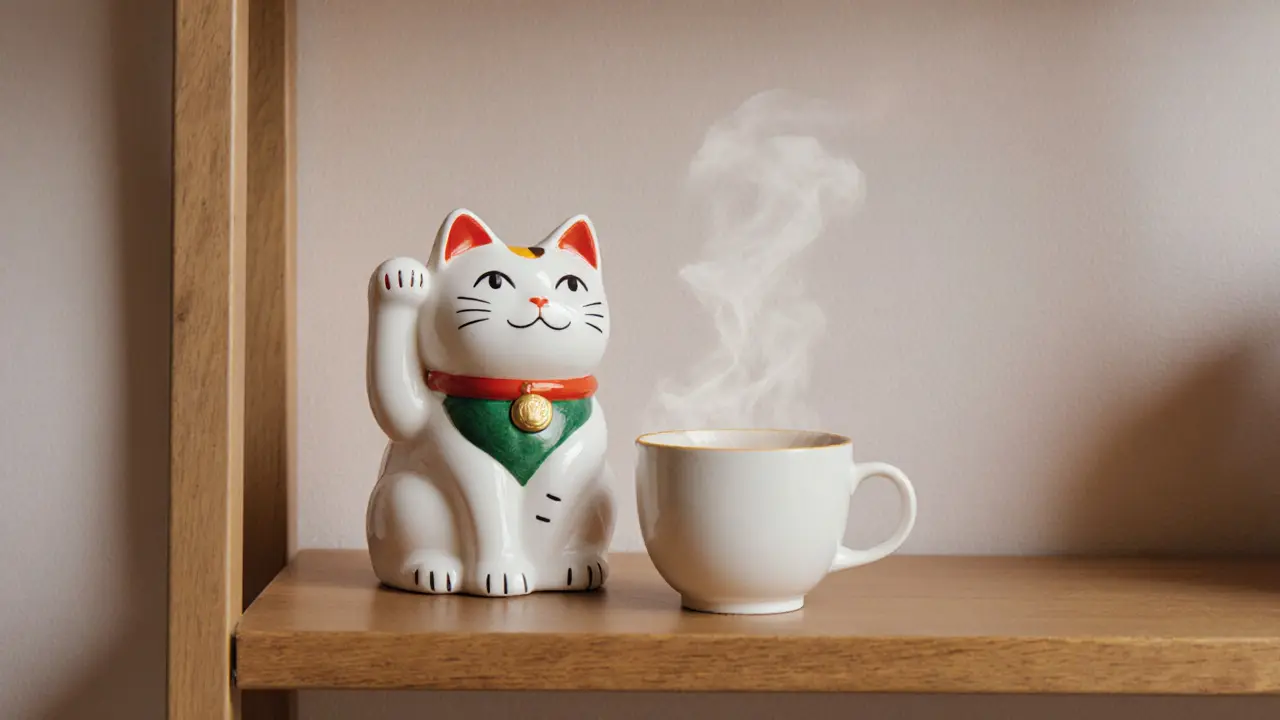Japanese Lucky Cat: Meaning, Symbols, and Why It’s Everywhere
When you see a small ceramic cat with one paw raised, smiling at you from a shop counter or doorway, you’re looking at a Japanese lucky cat, a traditional Japanese figurine believed to attract good fortune and ward off bad luck. Also known as maneki neko, it’s not just decor—it’s a cultural symbol with deep roots in Japanese folklore and business tradition. You’ll find it in restaurants, nail salons, convenience stores, and even online marketplaces. But why? What does it actually do? And why is one paw up instead of both?
The raised paw isn’t random. A right paw raised means it’s inviting wealth and prosperity—common in shops and businesses. A left paw raised draws in customers and people, which is why you’ll see it near entrances. Some versions have both paws up, symbolizing balance between money and people. The color matters too: white stands for purity, gold for wealth, black for protection from evil, and red for health. The coin it holds? That’s a koban, an old Japanese gold coin, often engraved with the kanji for "wealth" or "fortune."
The maneki neko, a symbol of prosperity rooted in 17th-century Japanese legends. Also known as beckoning cat, it’s tied to real stories—from a poor temple cat that saved a lord from lightning to a geisha’s cat that brought customers to her tea house. These aren’t just myths. People still place them in homes and businesses today because they believe in their power. It’s not superstition—it’s ritual, passed down because it works in the way people experience life: comfort, hope, and a little bit of magic in the everyday.
What’s interesting is how this little cat shows up in places you wouldn’t expect. You’ll find it next to a Raising Cane’s in London, near the London Central Mosque, even tucked into a boutique hotel lobby. It doesn’t care about the city or the culture—it’s a universal sign of welcome. It’s not about religion or politics. It’s about intention. Someone put it there because they wanted good things to come through the door.
And while it’s often sold as a trinket, the Japanese lucky cat is part of a larger system of symbols that people use to shape their environment. Think of it like a lucky charm, but one with history, rules, and meaning. It’s not about believing in magic—it’s about believing in the power of small, thoughtful actions. Placing a cat by the door is a quiet way to say: "I’m open. I’m ready. Good things are welcome here."
What you’ll find below are real stories, places, and moments where this symbol shows up—not just in Japan, but across the world. From quiet homes to busy streets, the maneki neko is more than a statue. It’s a quiet promise. And you’ll see how it fits into the rhythm of everyday life, even in places like London, where tradition meets modernity in the most unexpected ways.
- Elara Whitlock
- November 5, 2025
- Comments 0

